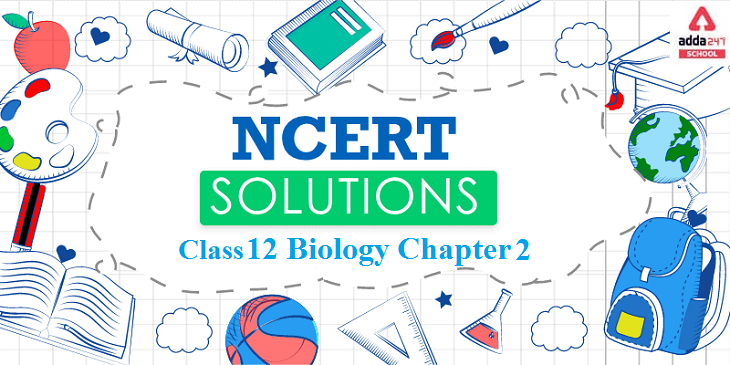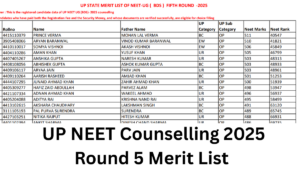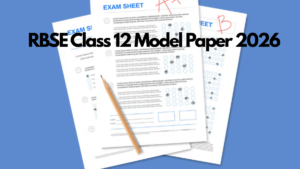The NCERT Solutions for Class 12 Biology chapter 2 provides information about Human Reproduction. The events of sexual reproduction in human beings are- Gametogenesis- the process of formation of gametes is called as gametogenesis. Insemination- the process of transfer of sperms into the ovum is called insemination. Fertilization- the process of fusion of male and female gamete to form a single celled zygote is called fertilization. Implantation- the process of attachment of embryo to the endometrial wall of uterus of female is called implantation. Gestation- the period of embryonic development is called gestation. Parturition- the process of delivery of the baby is called parturition.
NCERT Solutions Class 12th Biology Chapter 2 – Human Reproduction
Students referring to the NCERT Solutions of class 12 by Adda 247 find the solutions helpful during the exams. The solutions are prepared by the experts in an interactive manner keeping in mind the students. Check the complete NCERT Class 12 Biology Chapter 2 solutions in the table given below.
NCERT Solutions for Class 12th Biology Chapter 2- Human Reproduction
Question 1. Fill in the blanks:
(a) Humans reproduce _____________ (asexually/sexually)
(b) Humans are _____________ (oviparous, viviparous, ovoviviparous)
(c) Fertilisation is _____________ in humans (external/internal)
(d) Male and female gametes are _____________ (diploid/haploid)
(e) Zygote is _____________ (diploid/haploid)
(f) The process of release of ovum from a mature follicle is called _____________
(g) Ovulation is induced by a hormone called _____________
(h) The fusion of male and female gametes is called _____________
(i) Fertilisation takes place in _____________
(j) Zygote divides to form _____________which is implanted in uterus.
(k) The structure which provides vascular connection between foetus and uterus is called
Answer: a) Humans reproduce sexually.
(b) Humans are viviparous.
(c) Fertilisation is internal in humans.
(d) Male and female gametes are haploid.
(e) Zygote is diploid.
(f) The process of release of ovum from a mature follicle is called ovulation.
(g) Ovulation is induced by a hormone called Leutinizing hormone.
(h) The fusion of male and female gametes is called fertilization.
(i) Fertilisation takes place in oviduct.
(j) Zygote divides to form blastula which is implanted in uterus.
(k) The structure which provides vascular connection between fetus and uterus is called umbilical cord.
Question 4. Write two major functions each of testis and ovary.
Answer:
(i) Functions of testis:
(a) Formation of sperms by the process of spermatogenesis.
(b) Secretion of testosterone hormone.
(ii) Functions of ovary:
(a) Formation of ova by the process of oogenesis.
(b) Secretion of female hormones like estrogens, progesterone and relaxin.
Question 5. Describe the structure of a seminiferous tubule.
Answer: Seminiferous tubules are highly coiled structures present in testicular lobules. The seminiferous tubules are lined by two types of cells i.e. spermatogonia and sertoli cells from inside. Spermatogonia are the male germ cells that form sperms through meiotic divisions followed by mitotic division, while Sertoli cells provide nutrition to the germ cells. The regions outside the seminiferous tubules called is called the interstitial space and it contains small blood vessels and Leydig cells. The Leydig’s cells secrete androgens.
Question 6. What is spermatogenesis? Briefly describe the process of spermatogenesis.
Answer: Spermatogenesis
The process of formation of sperms is called spermatogenesis. It involves 3 phases- multiplication phase, growth phase, maturation phase.
In multiplication phase, male germ cells also called as spermatogonia undergo mitotic divisions to form large number of spermatogonia.
In growth phase, spermatogonia increases their size by accumulation of nutrition in the cytoplasm and are ready for meitoic division and the spermatocytes are called as primary spermatocytes with 46 chromosomes.
In maturation phase- A primary spermatocyte completes the first meiotic division leading formation of two equal, haploid cells called secondary spermatocytes, which have only 23 chromosomes each and the secondary spermatocytes undergo the second meiotic division to produce four equal, haploid spermatids
Spermiogenesis-
The spermatids are transformed into sperms, also called as spermatozoa by the process called spermiogenesis.
After spermiogenesis, sperm heads become embedded in the Sertoli cells and are released from the seminiferous tubules by the process called spermiation.
Hormonal control of spermatogenesis
Spermatogenesis starts at the age of puberty due to significant increase in the secretion of gonadotropin releasing hormone (GnRH) from hypothalamus.
The increases level of gonadotropin releasing hormone stimulates the anterior pituitary to
secrete luteinizing hormone(LH) and follicle stimulating hormone(FSH).
LH acts at the Leydig cells and stimulates synthesis and secretion of androgens.
Androgens stimulate the process of spermatogenesis.
FSH acts on the Sertoli cells and secrete two factors- androgen binding protein (ABP) and inhibin which helps in spermiogenesis.
Question 7. Name the hormones involved in regulation of spermatogenesis.
Answer: Spermatogenesis starts at the age of puberty due to significant increase in the secretion of gonadotropin releasing hormone (GnRH) from hypothalamus.
The increases level of gonadotropin releasing hormone stimulates the anterior pituitary to secrete luteinizing hormone(LH) and follicle stimulating hormone(FSH).
LH acts at the Leydig cells and stimulates synthesis and secretion of androgens.
Androgens stimulate the process of spermatogenesis.
FSH acts on the Sertoli cells and secrete two factors- androgen binding protein (ABP) and inhibin which helps in spermiogenesis.
Question 8. Define spermiogenesis and spermiation.
Answer: Spermiogenesis – is a process in which spermatids are transformed into mature sperms/spermatozo
Spermiation – is a process in which the mature spermatozoa are released into the lumen of seminiferous tubules from the sertoli cells.
Question 9. Draw a labelled diagram of sperm.
Answer: Spermatozoon is a mature male gamete or reproductive cell. A sperm cell comprises of a round or cylindrical nucleated cell. a short neck, and a thin motile tail. The structure of sperm is very important for its motility and function in sexual reproduction. The nucleus contains half of the genetic information and fuses with the ovum (female gamete) to form a zygote. A sperm cell determines the sex of its offspring in mammals, if it bears Y chromosome, then male offspring will be the result and if X chromosome the female offspring.
Diagrammatic representation of a sperm:
Question 10. What are the major components of seminal plasma?
Answer:
- The secretions of seminal vesicles, prostate gland, and Cowper’s glands.
- Spermatozoa
- About 70% of the seminal plasma is secreted by seminal vesicles. It is rich in fructose, citrate, prostaglandins and certain enzymes.
Question 11. What are the major functions of male accessory ducts and glands?
Answer:
The male accessory ducts are:
Rete testis- The seminiferous tubules are closed at one end and on the other end it is joined to a network of rete testis from where fine ciliated ductules, the vasa efferentia arise.
Vasa efferentia: They are the fine ciliated ductules, which transport the sperm to the epididymis.
Epididymis- It stores the sperm and secretes the fluid which is considered to nourish the sperms.
Vasa deferentia- A vasa deferens emerges from the cauda epididymis on each side of the scrotal sac and enters the abdominal cavity.
The accessory ducts are responsible for the storage and transportation of sperms from the testis to the outside through the urethra.
The male accessory glands are:
Seminal vesicles- The seminal vesicles are one pair of sac-like structure which joins vasa deferentia to form ejaculatory ducts. The secretions of the seminal vesicles contain fructose and hormones like prostaglandins. Fructose provides energy to the sperms. The prostaglandins stimulate the secretion of uterine contractions and help the movement of the sperms inside the female uterus.
Prostate gland: The secretion of this gland contains citric acid and enzymes which nourish and activate the spermatozoa to swim.
A pair of the bulbourethral gland- It is present on either side of the membranous urethra. They secrete an alkaline fluid. They also secrete mucus that lubricates the end of the penis and the lining of the urethra.
Question 12. What is oogenesis? Give a brief account of oogenesis.
Answer: The formation of ovum from oogonia in females takes place by a process called oogenesis, which occurs in the ovary. During the process a diploid oogonium or egg mother cells increases in size and transforms into a diploid primary oocyte, the later then undergoes meiosis I or reductional division to form two unequal haploid cells. The smaller cell is called “first polar body” and the larger cell is called “secondary oocyte”. The secondary oocyte undergoes meiosis II or equational division to form a secondary polar body and an ovum.
| NCERT Solutions for Class 12 Biology Chapter-wise |
|
Chapter 1: Sexual Reproduction in Flowering Plants
|
|
Chapter 2: Human Reproduction
|
|
Chapter 3: Reproductive Health
|
|
Chapter 4: Principles of Inheritance and Variation
|
|
Chapter 5: Molecular Basis of Inheritance
|
|
Chapter 6: Evolution
|
|
Chapter 7: Human Health and Disease
|
|
Chapter 8: Microbes in Human Welfare
|
|
Chapter 9 : Biotechnology: Principles and Processes
|
|
Chapter 10: Biotechnology and its Applications
|
|
Chapter 11: Organisms and Populations
|
|
Chapter 12: Ecosystem
|
|
Chapter 13: Biodiversity and Conservation
|











 UP NEET Counselling 2025 Round 5 Merit L...
UP NEET Counselling 2025 Round 5 Merit L...
 RBSE Class 10 Model Paper 2026 Out, Down...
RBSE Class 10 Model Paper 2026 Out, Down...
 RBSE Class 12 Model Paper 2026 for Arts,...
RBSE Class 12 Model Paper 2026 for Arts,...






